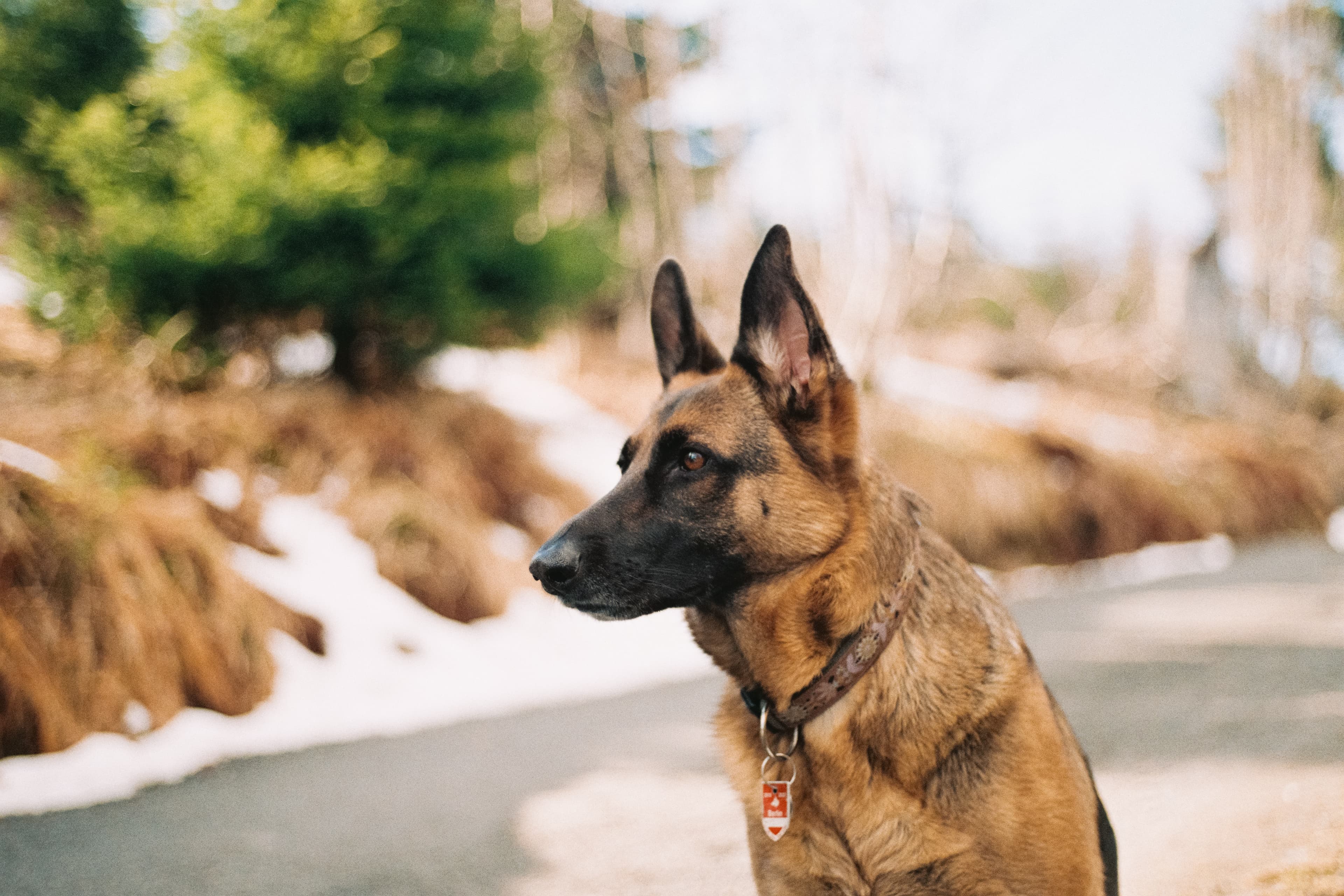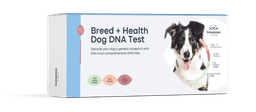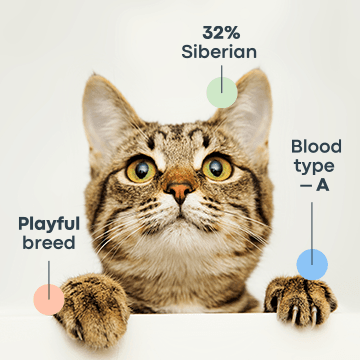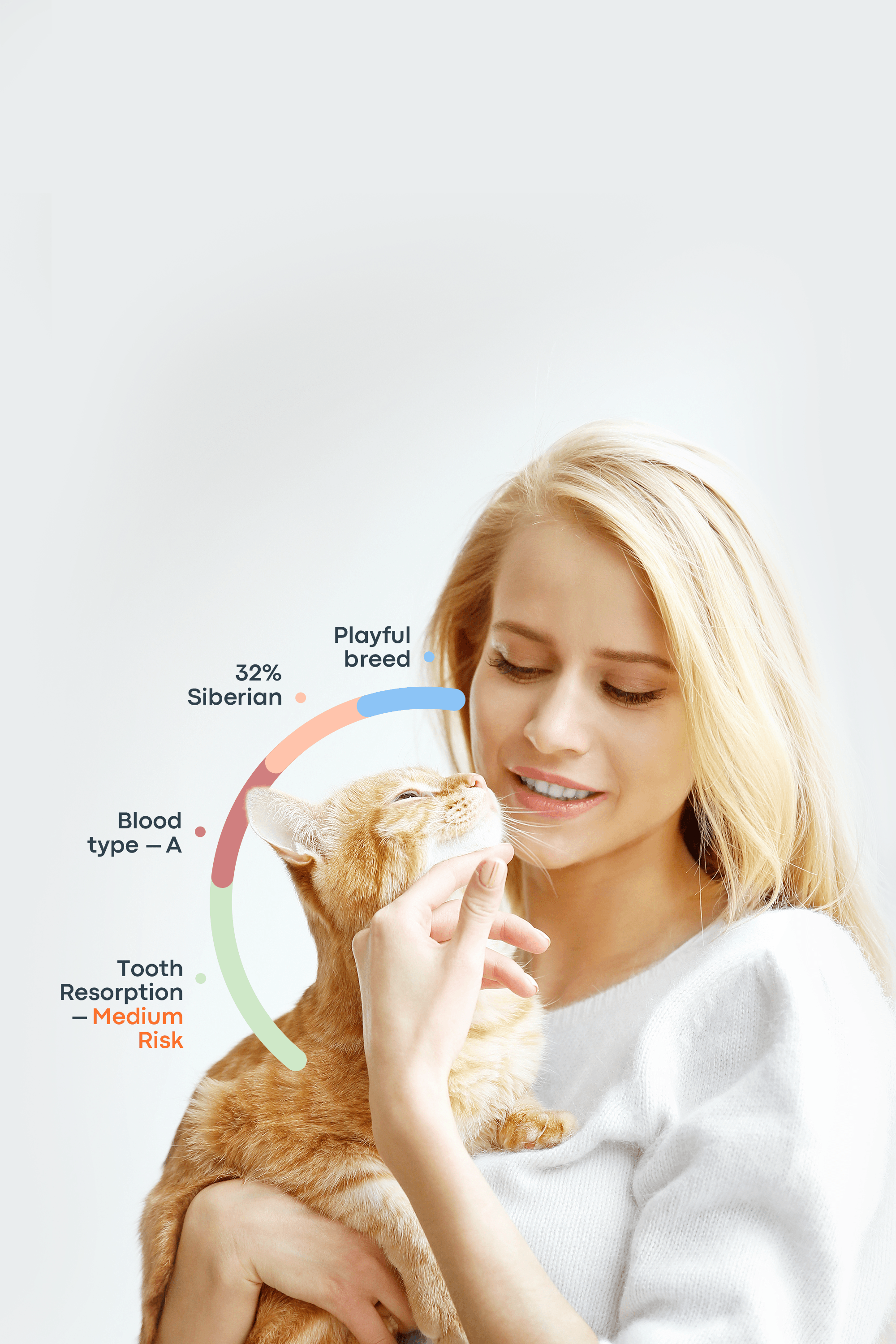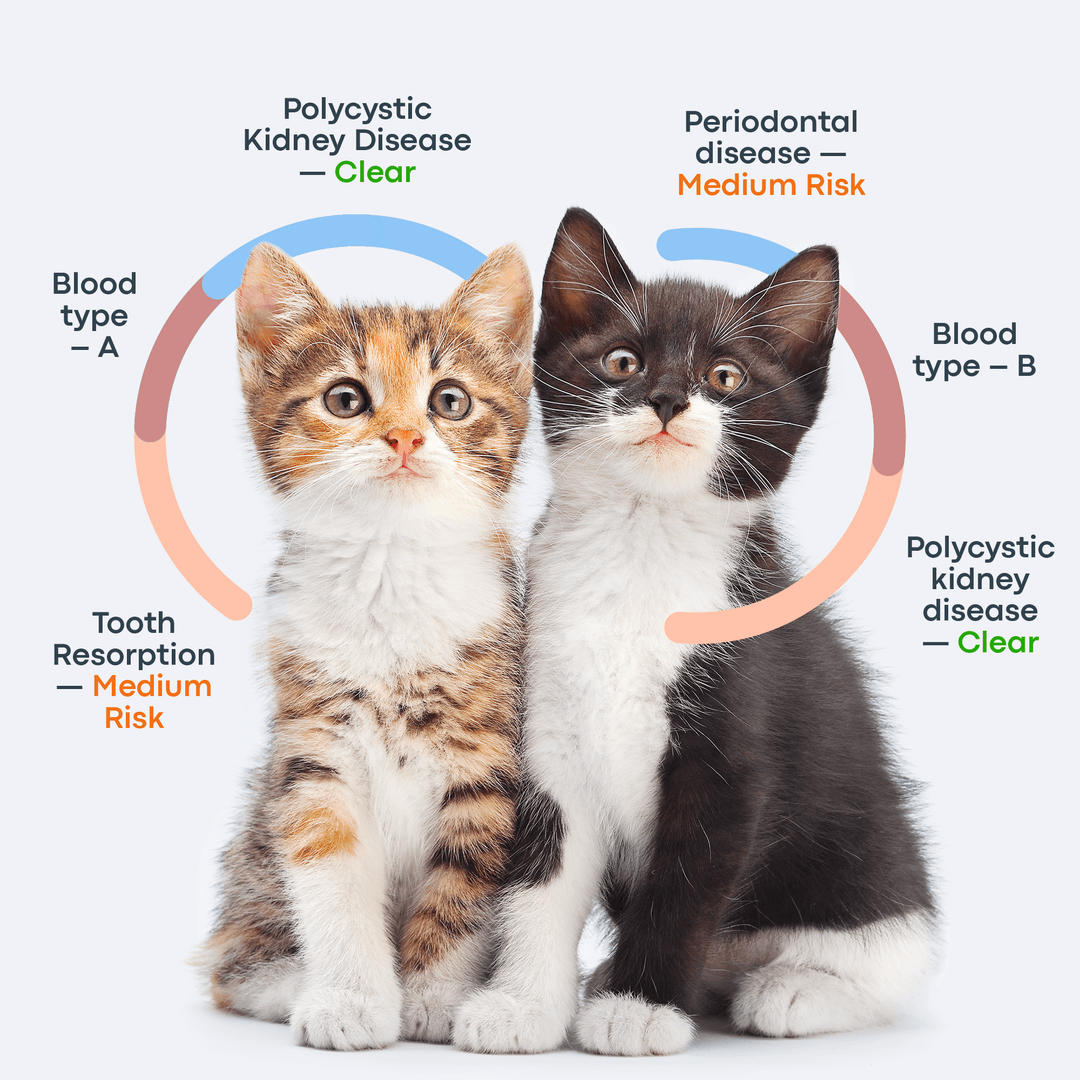Guard dogs have inherent qualities such as heightened senses, quick reactions, and protective instincts, which make them great for protection. Ancient civilizations like Mesopotamia and Egypt have used guard dogs to protect their properties and livestock. Mastiff-like breeds guarded villages and palaces in ancient China.
Even in ancient Rome, guard dogs were common in urban home settings. One of the oldest guard dog breeds, the German Rottweiler, emerged around the 19th century.
Now, people often seek affection from their dogs, along with safety. The guard dog's dual role makes them essential for families looking for emotional connection and protection. This is one reason people have selectively bred guard dogs to have specific traits of a protective family guardian, including loyalty, social temperament, alertness, and trainability.
Top 15 Guard Dog Breeds for Protection
Cane Corso

Breed Attribute | Cane Corso |
Breed Group | Working Group |
Height | 23.5 to 27.5 inches (60–70 cm) |
Weight | 88 to 120 pounds (40–54 kg) |
Coat and Color | Short, dense coat; colors include black, gray, fawn, red, and brindle |
Temperament | Loyal, protective, confident, intelligent, and reserved with strangers |
Life Expectancy | 9 to 12 years |
Cane Corso, or Italian Mastiff, is one of the best guard dogs because of their size, loyalty, and protective nature. These large and muscular dogs were originally bred to guard livestock and properties. The name can be translated from the Latin as “bodyguard dog.”
They need plenty of exercise to keep them physically and mentally stimulated. Walking or running with you twice a day can keep them content. These dogs are usually not best suited for apartments because of their size and energy levels.
The Cane Corso breed is highly intelligent and easy to train. Early socialization and puppy training are essential. Also, they can be great family pets with basic obedience training.
Their short, double coat needs minimal grooming. Weekly brushing can keep their coat healthy.
With a life expectancy of 9-12 years, the Cane Corso breed is generally healthy but should be screened for health conditions, including obesity, hip and elbow dysplasia, and idiopathic epilepsy.
Giant Schnauzer

Breed Attribute | Giant Schnauzer |
Breed Group | Working Group |
Height | 23.5 to 27.5 inches (60–70 cm) |
Weight | 55 to 85 pounds (25–39 kg) |
Coat and Color | Dense, wiry double coat; common colors are solid black and salt & pepper |
Temperament | Loyal, intelligent, alert, powerful, and protective |
Life Expectancy | 12 to 15 years |
Giant Schnauzers are also among the protective dog breeds that are great at protecting their family and home. What makes them good guard dogs is their ability to resist pain. They are active and need activities for mental and physical stimulation. Long walks, running, and play sessions with other dogs are great ways to do that.
Giant Schnauzers are highly intelligent and trainable. They enjoy and do well in dog sports, such as carting, agility, herding, obedience, and coursing ability tests. Early socialization is also a must to keep them well-behaved around people.
It’s important to keep their coat and ears clean, and nails trimmed. Their dense, wiry, weather-resistant double coats require weekly grooming. However, regular clipping or stripping is essential to keep their coat healthy.
With a lifespan of 10-13 years, the Giant Schnauzer is an overall healthy breed but can be prone to some diseases like hip dysplasia, eye disease, and autoimmune thyroiditis.
Anatolian Shepherd

Breed Attribute | Anatolian Shepherd |
Breed Group | Working Group (also classified as Guardian/Livestock Guardian Dog) |
Height | 27 to 29 inches (69–74 cm), often taller in males |
Weight | 80 to 150 pounds (36–68 kg) |
Coat and Color | Short to medium-length double coat; colors include fawn, white, brindle, or various combinations |
Temperament | Independent, loyal, protective, calm, and reserved |
Life Expectancy | 11 to 13 years |
Originally bred in Anatolia, Turkey, as livestock guardians, Anatolian Shepherds are suspicious and watchful by nature. Because they can independently guard livestock, this dog breed is considered highly valuable as working dogs. These dogs are loyal and protective but need firm training to keep them obedient.
Moreover, their aggressive behavior with visitors and unknown dogs and the need for space to patrol make them unsuitable for apartments. They require experienced pet parents to understand, guide, and socialize them.
The short or rough coat of the Anatolian Shepherd requires minimal grooming. A brushing session with a pin brush once a week will help prevent tangles from forming. A bath once a month is enough to keep your dog looking their best. Keep in mind to regularly trim their nails and brush their teeth.
Anatolian Shepherds typically live for 11-13 years and are healthy dogs, but reputable breeders should screen for certain health issues, such as hip and elbow dysplasia, entropion (an eye disorder), gastric dilatation and volvulus (GDV), according to an article by PetMD.
Tibetan Mastiff

Breed Attribute | Tibetan Mastiff |
Breed Group | Working Group |
Height | 24 to 30 inches (61–76 cm), with males typically larger |
Weight | 70 to 150 pounds (32–68 kg), sometimes more in large males |
Coat and Color | Thick, double coat; colors include black, brown, blue-gray, red-gold, and tan markings |
Temperament | Strong-willed, protective, aloof with strangers, independent, and loyal |
Life Expectancy | 10 to 12 years |
The Tibetan Mastiff also made it into the list of best guard dog breeds. Aloof, mentally sharp, watchful, and a bit primitive, these dogs are powerful and intimidating, making them one of the popular guard dog breeds.
In history, these dogs protected caravans of people and herds in the Himalayas against wolves and snow leopards, according to the Spruce Pets. However, they are easy-going around the family. Also, like any other guard dog, they need structure through training and socialization. It helps keep them out of trouble.
If you’re wondering about grooming your Tibetan, their double coat with coarse hair and a heavy, woolly undercoat is easier to maintain, requiring weekly brushing with a slicker or a pin brush to clear the surface dirt. Tibetan Mastiffs need exercise every day in moderation. They prefer more work-related tasks, such as patrolling the territory. Moreover, they need a large, secure space for living, hence apartments are unsuitable for them.
This dog breed is highly intelligent, learns quickly, but does not respond well to traditional obedience training as they do not like to repeat what they already know. Also, they do not have a reliable recall and should not be trusted off-leash.
With a lifespan of 10-12 years, Tibetan Mastiffs are usually healthy dogs. However, a responsible breeder will screen them for health conditions, such as hypothyroidism and elbow and hip dysplasia,
Rhodesian Ridgeback

Breed Attribute | Rhodesian Ridgeback |
Breed Group | Hound Group |
Height | 24 to 27 inches (61–69 cm) |
Weight | 70 to 85 pounds (32–39 kg) |
Coat and Color | Short, dense coat; color is typically light wheaten to red wheaten, sometimes with a black or brown nose |
Temperament | Dignified, loyal, independent, intelligent, and sometimes aloof |
Life Expectancy | 10 to 12 years |
With a gentle, affectionate, caring, loyal, and dignified temperament, the Rhodesian Ridgeback is one of the best guard dog breeds. These dogs were originally bred to help hunt lions, so standing up to suburban threats is no big deal for them. However, they can be domineering and stubborn and need firm training.
It’s important to start obedience training and socializing while they are young, as it helps them move around with new people and other dogs. Ridgebacks are usually patient and friendly with their family, but make sure you teach them how to interact with children. Also, keep in mind that these dogs love large spaces to be active, making them unsuitable for apartment living.
With bursting energy, these dogs need sufficient exercise from a young age. As an adult, two to three 30-minute walks a day are enough to keep them stimulated. Other fun activities include tracking exercises and dog sports, such as lure-coursing.
With a life expectancy of 10 to 12 years, this dog breed can be prone to certain health conditions, including hip and elbow dysplasia, hypothyroidism, and Juvenile Myoclonic epilepsy.
Kuvasz

Breed Attribute | Kuvasz |
Breed Group | Working Group |
Height | 26 to 30 inches (66–76 cm) |
Weight | 70 to 115 pounds (32–52 kg) |
Coat and Color | Thick, double coat with a wavy or straight texture; always white |
Temperament | Loyal, protective, independent, intelligent, and sometimes aloof with strangers |
Life Expectancy | 10 to 12 years |
Kuvasz is a confident and intelligent guard dog breed. They are not overly energetic or stubborn but are capable of independent thinking. As a working breed, they need an outlet for their energy and do well when they have a purpose and regular exercise. While these dogs are gentle, it's crucial to socialize them as puppies with children and other dogs so they get along with new people and other animals.
Kuvasz are known for their calm demeanor and attentiveness to their family and home. Their secure nature prevents them from becoming anxious. However, their watchful instinct makes them aloof around strangers.
This breed can turn out to be a challenge for first-time pet parents because of their working temperament. Some activities your Kuvasz will enjoy include nose work, hunting, agility, and walks. You also need to keep an eye on your Kuvasz as they have a drive to escape fenced-in space. Moreover, they are not suited for apartment living.
Kuvasz’s thick and wavy double coat requires minimal grooming, but it sheds significantly, particularly during the summer. Occasionally bathing these dogs can keep their coat healthy and make them look their best.
With an average lifespan of 10-12 years, the Kuvasz is a healthy dog breed but can develop certain health problems, including hip and elbow dysplasia, bloat and gastric dilatation volvulus (GDV), and hypothyroidism.
German Shepherd

Breed Attribute | German Shepherd |
Breed Group | Herding Group |
Height | 22 to 26 inches (56–66 cm) |
Weight | 50 to 90 pounds (23–41 kg) |
Coat and Color | Medium-length double coat; colors include black and tan, sable, black, and sometimes white or blue |
Temperament | Intelligent, loyal, confident, obedient, courageous, and protective |
Life Expectancy | 9 to 13 years |
German Shepherds are one of the popular guard dogs, excelling in various roles, including police and military work, and are renowned for their intelligence and versatility. Their loyalty and companionship to their family are unmatched. Not only powerful and watchful, they are very athletic and active dogs, which is why they need a lot of exercise for their physical and mental stimulation. They can participate in dog sports such as agility, tracking, herding, and dock diving.
Like any other guard dog, early socialization and puppy training are vital in the German Shepherd’s case. Obedience training helps ensure they grow into well-mannered dogs. These are highly intelligent and extraordinary workers. Positive reward-based training will give desirable results.
As far as grooming is concerned, German Shepherds are easy to maintain because they have a medium-length double coat that consists of a dense and harsh outer coat and a softer undercoat. They require brushing every few days to help get rid of the loose hair and an occasional bath.
This guard dog breed has a lifespan of 7-10 years but may be prone to several health issues, such as degenerative myelopathy, hip and elbow dysplasia, and bloat.
Rottweiler

Breed Attribute | Rottweiler |
Breed Group | Working Group |
Height | 22 to 27 inches (56–69 cm) |
Weight | 80 to 135 pounds (36–61 kg), with males typically larger |
Coat and Color | Short, dense double coat; always black with clearly defined rust or mahogany markings |
Temperament | Loyal, confident, calm, protective, and courageous |
Life Expectancy | 9 to 10 years |
Rottweilers are powerful, confident dogs with a natural protective instinct. They are loving and loyal companions to their families but can be formidable guardians when needed. Proper training and socialization are essential to ensure they become well-balanced protectors.
The breed is descended from mastiffs and was nearly extinct in the late 1800s. Today, it is one of the most popular dog breeds in the U.S. With their large size, Rottweilers can easily intimidate intruders, but excel in herding and protecting. They are a confident and versatile working dog breed.
It’s crucial to socialize your Rottweiler early on to have a well-behaved dog. Make sure to use positive reinforcement and treats when they are well-mannered.
They can bark excessively and chew on things when bored, so providing them with enough mental stimulation through training sessions and playtime is essential.
These dogs are intelligent and eager to please their parents, which makes them highly trainable. Training your Rottweiler can also help with their excessive barking.
Their short double coat is low maintenance, requiring regular brushing as the coat sheds quite a lot and an occasional bath. Make sure to brush their teeth at least three times a week.
With an average lifespan of 9 to 10 years, Rottweilers can be susceptible to several health problems, such as hip and elbow dysplasia, obesity, osteosarcoma, gastric dilatation volvulus (GDV), and entropion.
Doberman Pinscher

Breed Attribute | Doberman Pinscher |
Breed Group | Working Group |
Height | 24 to 28 inches (61–71 cm) |
Weight | 60 to 100 pounds (27–45 kg) |
Coat and Color | Short, smooth coat; common colors include black, red, blue, and fawn with rust markings |
Temperament | Intelligent, alert, loyal, fearless, and obedient |
Life Expectancy | 10 to 12 years |
Known for their elegance, strength, and laser-like focus, Doberman Pinschers are highly intelligent, sleek, fearless, loyal, and fast, making them one of the best guard dogs you can choose for your family. They can be gentle and affectionate with their families while remaining vigilant protectors.
Pinschers are usually very attached to their people and easy to train, thanks to the need to please their owner. Obedience and basic dog training are crucial in keeping them well-behaved. It’s best to socialize and puppy train your guard dogs early on so they can behave appropriately around other dogs and people.
Also, since this is a curious and intelligent dog breed, they require an active routine that keeps them physically and mentally stimulated. Loaded with energy, they can become great running companions.
With short, smooth coats, they need minimal grooming, including brushing and occasional baths. While an overall healthy breed, Doberman Pinschers may be susceptible to certain health issues, such as Von Willebrand disease, hypothyroidism, bloat, and hip dysplasia. They have a life expectancy of 10-12 years.
Bullmastiff

Breed Attribute | Bullmastiff |
Breed Group | Working Group |
Height | 24 to 27 inches (61–69 cm) |
Weight | 100 to 130 pounds (45–59 kg) |
Coat and Color | Short, dense coat; colors include fawn, red, or brindle, often with a black mask |
Temperament | Brave, loyal, protective, calm, and affectionate with family |
Life Expectancy | 7 to 9 years |
Bullmastiffs have a calm temperament and strong protective instincts. Incredibly loyal to their families, they are known for their courage and confidence. Despite their intimidating size, they are affectionate and gentle with children, which makes them excellent family guard dogs.
Highly territorial, these dogs can be intimidating to new people as they become suspicious of them. This calls for socialization early on while they are still puppies.
With a great amount of energy, this dog breed is incredibly smart and learns quickly, which means they are easy to train. They can do well in socialization puppy training classes and obedience training. Bullmastiffs can also get along with other dogs, but they must be socialized with them when they are young.
Bullmastiffs need exercise regularly, including walks and play sessions within a fenced yard.
Considering their size and need for exercise, Bullmastiffs are not the best choice for apartments or small houses. Short, coarse fur of this breed requires very little grooming, including monthly brushing and an occasional bath when they get messy.
Bullmastiffs typically have a lifespan of 7-9 years and are a healthy breed, but can be prone to certain health issues, such as heart diseases, hip and elbow dysplasia, entropion, progressive retinal atrophy (PRA), bloat and gastric dilatation volvulus (GDV).
Boxer

Breed Attribute | Boxer |
Breed Group | Working Group |
Height | 21.5 to 25 inches (55–63.5 cm) |
Weight | 50 to 80 pounds (23–36 kg) |
Coat and Color | Short, smooth coat; colors include fawn or brindle, often with white markings |
Temperament | Energetic, playful, intelligent, loyal, and affectionate |
Life Expectancy | 10 to 12 years |
Energetic, playful, and loyal, Boxers are known for their boundless enthusiasm and natural protective instincts. Also, these guard dogs may be brawny and look intimidating, but they are not aggressive. They are usually fun-loving and family-friendly, according to Dr. Patel, in an article by the Reader’s Digest. And being gentle and playful makes them the perfect choice for families with kids.
Since Boxers are loaded with energy, they need plenty of exercise daily. Make sure they are on a leash or in a fenced area. Also, they can easily become bored with repetition, have minds of their own, and are great problem solvers. Not only that, they can do wonders in different canine sports like agility, obedience, and herding.
If you’re concerned about grooming, you can relax because Boxers’ short, shiny coats need minimal grooming. Brushing once or twice a week and bathing only occasionally will make them look their best.
With a life expectancy of 10-12 years, Boxers are prone to several health conditions, like thyroid deficiency, cardiomyopathy, aortic stenosis, and certain cancers. A responsible breeder should test the dog for these diseases.
Belgian Malinois

Breed Attribute | Belgian Malinois |
Breed Group | Herding Group |
Height | 22 to 26 inches (56–66 cm) |
Weight | 40 to 80 pounds (18–36 kg) |
Coat and Color | Short, straight coat; typically fawn to mahogany with black mask and ears |
Temperament | Intelligent, energetic, alert, hardworking, and loyal |
Life Expectancy | 14 to 16 years |
Belgian Malinois is another one of the popular choices for the best guard dogs. They are intelligent, agile dogs that excel in protection work. They are highly trainable, have great search and rescue abilities, and strong work ethics, making them ideal for police and military roles. Their loyalty makes them one of the most protective dog breeds.
Belgian Malinois have high energy levels, thrive when they have a job, and need plenty of exercise to stay out of trouble. They need at least 40 minutes of exercise per day. Some activities they love are agility, herding, tracking, and scent walks. While these dogs thrive best in large spaces, they can adapt to apartment living if they are given enough exercise.
As with all the other guard dog breeds, specialized training and proper socialization are essential for Malinois to make them feel at ease in unfamiliar situations and behave appropriately around new people and other dogs. The Belgian Malinois is smart, eager to please, and a fast learner, making them trainable.
Their short, waterproof coat is easy to take care of. They need occasional brushing with a medium-bristle brush, or a rubber grooming mitt or tool will help them look their best.
The Belgian Malinois' life expectancy is typically 10-14 years. Overall, a healthy dog breed, the Malinois is predisposed to several health conditions, such as hip and elbow dysplasia, cataracts, and progressive retinal atrophy (PRA).
Great Dane

Breed Attribute | Great Dane |
Breed Group | Working Group |
Height | 28 to 32 inches (71–81 cm), with males often taller |
Weight | 110 to 175 pounds (50–79 kg) |
Coat and Color | Short, smooth coat; colors include fawn, brindle, black, blue, harlequin, and mantle |
Temperament | Gentle, friendly, affectionate, patient, and dependable |
Life Expectancy | 7 to 10 years |
Often called the “Apollo of Dogs,” the Great Dane is a guard dog species known for its intelligence and loyalty. They are giant, gentle dogs with a protective streak. Despite their massive size, they are affectionate and friendly with their families. Like any other dog breed, they need sufficient exercise. A brisk walk at least twice a day can help keep Great Danes healthy. Great Danes also like canine sports such as agility and tracking events, but remember to always keep them on a leash because they tend to follow scents.
As with any protective dog breed, early socialization and puppy training help them become confident adult dogs and behave more appropriately around people and other dogs. Fortunately, these guard dogs are sociable, eager to please, and gentle, so they respond well to firm and consistent training. Ensure you’re using positive reward-based training. Great Danes can adapt to apartment living if given sufficient exercise, but they do much better in homes with a large space.
Their short, smooth coat doesn’t shed much around the year, but weekly brushing with a bristle brush or a rubber grooming mitt or tool helps keep the shedding to a minimum. They need a bath only occasionally unless they get messy.
Bloat or gastric dilatation volvulus is one of the most prevalent causes of death in Great Danes. However, a reputable breeder should also screen for other health issues, including cardiac and eye diseases. These dogs live for around 7-10 years.
Akita

Breed Attribute | Akita |
Breed Group | Working Group |
Height | 24 to 28 inches (61–71 cm) |
Weight | 70 to 130 pounds (32–59 kg) |
Coat and Color | Double coat; colors include white, brindle, red, sesame, and pinto |
Temperament | Loyal, dignified, courageous, independent, and sometimes aloof with strangers |
Life Expectancy | 10 to 13 years |
Strong, independent, and loyal, Akitas are courageous and protective, making them excellent watchdogs for families. They are known for their loyalty and will fiercely protect their loved ones if they sense any threat.
In the Middle Ages, they were guards for the Japanese emperor and his family, hence the protective instinct. They are strong-willed dogs that were bred to guard and work independently. This makes socialization and puppy training from an early age essential so they can interact appropriately with other dogs and people.
So, if you are a new pet parent thinking about getting an Akita, maybe they are not for you, as these dogs need an experienced pet parent to understand and train them. They need regular exercise, like a long walk with you every day. Physical and mental activity will keep an Akita happy.
Akitas are intelligent dogs that learn cues quickly, however, you must hold their attention. Using positive reinforcement methods can help achieve that. These dogs have a thick double coat that sheds a lot, so regular brushing will help reduce shedding and prevent matting.
The Akita life expectancy is 10-14 years. This dog breed is prone to joint problems, especially hip problems.
Komondor

Breed Attribute | Komondor |
Breed Group | Working Group |
Height | 25.5 to 27.5 inches (65–70 cm), often taller in males |
Weight | 80 to 100+ pounds (36–45+ kg) |
Coat and Color | Distinctive long, corded coat resembling dreadlocks; always white |
Temperament | Independent, protective, calm, loyal, and reserved with strangers |
Life Expectancy | 10 to 12 years |
With their natural guard dog ability, they were originally bred to protect herds of sheep, livestock, and other properties. These dogs are naturally active, courageous, and loyal despite their appearance as “Mop Dogs.” Komondors are agile and athletic and need plenty of exercise to keep them mentally and physically healthy. Walks, free-running in a fenced area, and play sessions with housemate dogs are great ways to keep them stimulated.
Intelligent and affectionate, Komondors are usually gentle with children, but early socialization and puppy training are a must, along with obedience training to help them behave appropriately around new people. These dogs are considered independent thinkers and may become overly protective if not trained properly. Being loud barkers makes them unsuitable for apartments.
When caring for a Komondor, ensure routine checks on their skin for ticks and fleas. A consistent grooming routine can keep their coat clean and healthy.
With a life expectancy of 10-12 years, Komondor is an overall healthy guard dog breed. However, they should be screened for hip and elbow dysplasia, entropion, and ear infections.
Bull Terrier

Breed Attribute | Bull Terrier |
Breed Group | Terrier Group |
Height | 21 to 22 inches (53–56 cm) |
Weight | 50 to 70 pounds (23–32 kg) |
Coat and Color | Short, flat coat; colors include white, brindle, fawn, red, black, and tri-color |
Temperament | Energetic, playful, courageous, mischievous, and affectionate with family |
Life Expectancy | 12 to 13 years |
Strong, muscular dogs, Bull Terriers are known for their protective nature. They are loving and affectionate with their families, making them loyal companions. These dogs have high energy levels and independent thinking, so it’s essential to provide them with enough mental and physical stimulation.
Early socialization and obedience training will help Bull Terriers grow into confident and well-behaved adult dogs. However, this breed is not easy to train, but they can learn anything if motivated properly, like positive reinforcement rewards.
Their short coat requires weekly brushing with a soft bristle brush to remove the loose hair, as they shed a lot. With a lifespan of 12-13 years, Bull Terriers are prone to certain health issues, including patellar luxation, mitral valve dysplasia, and partial or total deafness.
Choosing the Right Guard Dog for Your Lifestyle
Best Guard Dogs for Families with Kids
The best dog breeds for families should possess a combination of protective instincts and a gentle temperament, especially around children. German Shepherds, Rottweilers, Bullmastiffs, Giant Schnauzers, Boxers, Great Danes, and Rhodesian Ridgebacks are excellent family guard dogs due to their imposing presence and affectionate nature. They are natural protectors and devoted companions, making them ideal for families seeking a loyal and watchful guardian.
Best Guard Dogs for Apartments
The best guard dogs for apartments can either be smaller dogs or those that can easily adapt to urban living and respond well to training. Doberman Pinscher, Boxer, German Shepherd, Akita, and Giant Schnauzer are the best guard dog breeds for apartments.
Best Low-Maintenance Guard Dogs
Bullmastiffs, Rhodesian Ridgeback, Doberman Pinscher, Giant Schnauzer, and German Shepherd are easy-to-train guard dogs that do not require extensive physical activity, making them the best low-maintenance guard dogs.
First-Time Owner Friendly Guard Dogs
First-time pet parents typically look for a protective dog breed that does not make training challenging. German Shepherds, Doberman Pinschers, Bullmastiffs, and Rottweilers are the best choices for a first-time dog owner.
Conclusion: Finding Your Ideal Protector
When looking for a guard dog and a canine companion for your family, consider the dog’s temperament, loyalty, and trainability. Proper training and socialization are vital for a great guard dog as they help them interact with family members and children appropriately and become loyal and loving companions.
Frequently Asked Questions
Do guard dogs need to be aggressive?
No, guard dogs don’t need to be aggressive. However, they should be able to display a strong, protective presence and engage in defensive actions when required, while being reliable.
Are small dogs bad at guarding?
No, small dogs can be effective guard dogs. They often alert their owner of a potential threat by loud barking. Small dog breeds, like the Chihuahua, can be extremely protective.
Can guard dogs be affectionate family pets?
Yes, with proper training and socialization, guard dogs can be affectionate family pets.
What are the best guard dog breeds?
The best guard dog breeds generally include German Shepherds, Rottweilers, Doberman Pinschers, Bullmastiffs, and Boxers, all renowned for their protective instincts, loyalty, and vigilance.
What is the best guard dog for a family?
The best guard dog in a family combines protective instincts with a gentle temperament. Breeds like the Great Dane, Bullmastiffs, and Boxer can be excellent choices, as they protect their families while being friendly and affectionate.
What are good guard dogs but friendly?
If you’re searching for guard dogs that are also friendly, breeds like the Bullmastiff, Boxer, and Great Dane fit that description. These dogs are protective when needed but are known for their social and affectionate nature with family members.
Reference List
https://www.thesprucepets.com/best-dogs-for-protection-4140197
https://www.petmd.com/dog/breeds/bullmastiff
